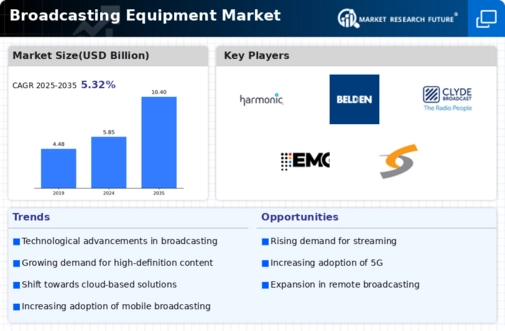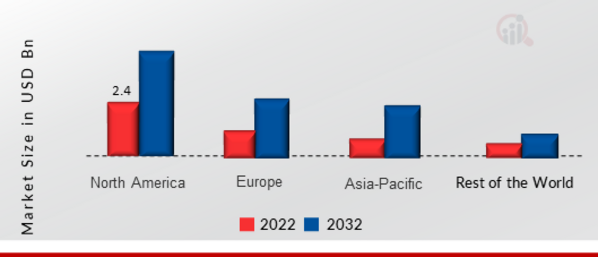Market Analysis
In-depth Analysis of Broadcasting Equipment Market Industry Landscape
The broadcasting equipment market is a dynamic and rapidly evolving sector, driven by advancements in technology and the ever-changing demands of the media and entertainment industry. As consumer preferences shift towards high-definition content and immersive viewing experiences, broadcasters continually seek to upgrade their equipment to stay competitive in the market.
One of the key market dynamics shaping the broadcasting equipment industry is the constant innovation in technology. The introduction of cutting-edge solutions, such as 4K and 8K broadcasting, virtual reality (VR), and augmented reality (AR), has fueled the demand for new and upgraded equipment. Broadcasters are investing heavily in state-of-the-art cameras, video servers, and production switchers to deliver content that meets the increasingly high expectations of viewers.
Moreover, the shift towards digital broadcasting has been a significant driver of market dynamics. The transition from analog to digital broadcasting has not only improved the quality of signals but has also opened up new avenues for broadcasters to deliver content through various platforms. As a result, there is a growing need for equipment that supports multi-platform distribution, including over-the-top (OTT) services, streaming platforms, and social media.
Consolidation within the media industry is another noteworthy factor influencing market dynamics. Mergers and acquisitions among major broadcasting companies have created larger entities with extensive networks and a broader reach. These industry consolidations drive the demand for more sophisticated and scalable broadcasting equipment to support the expanded operations of these conglomerates.
Global events and sports tournaments play a pivotal role in shaping the market dynamics of broadcasting equipment. The demand for high-quality live coverage of major events, such as the Olympics, World Cup, and other international competitions, drives broadcasters to upgrade their equipment to meet the technical challenges of delivering seamless and immersive experiences to viewers worldwide. This surge in demand often leads to temporary spikes in the market, prompting manufacturers to anticipate and respond to these cyclical patterns.
Cost considerations and budget constraints are also influential factors in the broadcasting equipment market. While there is a constant drive towards adopting the latest technologies, broadcasters must balance their desire for innovation with the practicalities of budget limitations. This dynamic creates a market environment where manufacturers must offer a range of solutions, from cost-effective entry-level equipment to high-end, feature-rich products catering to the diverse needs of broadcasters.
Regulatory changes and standards also contribute to the evolving dynamics of the broadcasting equipment market. As governments and regulatory bodies update broadcasting standards and guidelines, equipment manufacturers must adapt to meet these new requirements. This may involve enhancing the capabilities of existing equipment or developing entirely new solutions to comply with updated regulations, creating opportunities for innovation within the market.








Leave a Comment